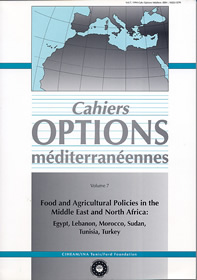| Article précédent | p. 221-267 | Article suivant |
The role of agriculture in the structural adjustment experience of Turkey: A general equilibrium analysis
In this study we will investigate the adjustment processes of the macro-economy and the role of the agricultural sector in the realization of such adjustment during the post-reform period. The study employs a two-level quantitative analysis: - 1) a Computable General Equilibrium (CGE) model of the macroeconomy is used to spell out the general developments and structural relationships of the overall economy, - 2) a detailed sectoral model of Turkish agriculture is utilized to implement a series of micro detail experiments. For decades, Turkish agriculture has operated under severe government regulation. After the Reform, however, the sector has found itself in an entirely different environment with the competitive pressures of competing imports, market determined prices and reduced subsidies. Phasing out the fertilizer subsidy had different effects with respect to both crops and regions. The overall performance of the agricultural sector in the last two decades is not encouraging. Turkish agriculture has been unable to adjust to the new market environment with less government intervention in both input and output markets. On the other hand, our results with CGE model experiments indicate that conflicting claims of various social classes on national output, and conflicting rates of intersectoral accumulation warranted by competing producer groups, are important sources of macrodisequilibrium in the domestic economy .
- [ Télécharger ]
- [ Exporter la citation ]
Vous pouvez télécharger la citation au format :
- [ Imprimer ]
- [OMC07]




